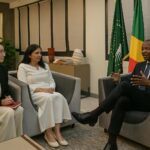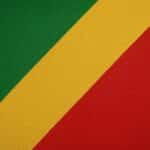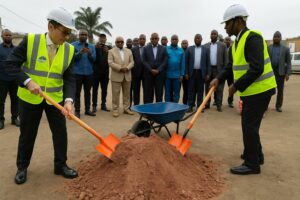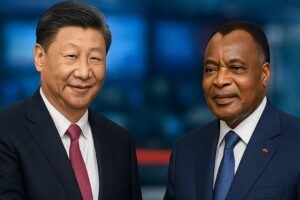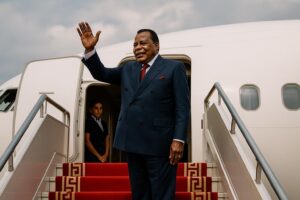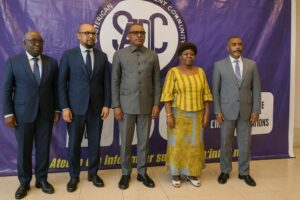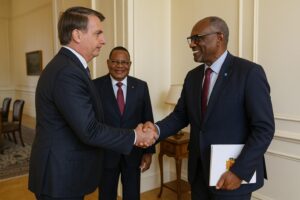Strategic Geography Along the Equatorial Belt
Straddling the equator and fronting the Atlantic on a slender 170-kilometre coast, the Republic of Congo offers a paradoxical canvas of dense rain forest and under-populated hinterland. Brazzaville’s planners frequently evoke the country’s position as a ‘hinge state’ bridging the Gulf of Guinea and the Great Lakes, a narrative echoed by the African Union’s latest infrastructure corridor blueprint (AU Commission, 2023). The Congo River itself, second only to the Amazon in discharge, remains both barrier and lifeline, enabling fluvial trade with Kinshasa while reminding observers that geography, not ideology, often determines diplomatic priorities.
- Strategic Geography Along the Equatorial Belt
- Demographic Dynamics and Urban Gravity
- Hydrocarbons: Boon, Burden and Diversification Drive
- Infrastructural Ambitions and External Partnerships
- Political Continuity and Institutional Resilience
- Regional Diplomacy and Multilateral Engagement
- Prospects for Sustainable Development
Demographic Dynamics and Urban Gravity
With an estimated 6.2 million citizens and a median age below twenty, Congo mirrors the youthful pulse of Central Africa. Yet almost seven out of ten Congolese already live in cities, a proportion well above the continental average (UN DESA, 2024). Brazzaville and Pointe-Noire act as magnetic poles: the former concentrating administrative talent, the latter anchoring the oil industry. Public health indicators have inched upward—life expectancy now exceeds 72 years—while fertility has gently declined to 3.9 children per woman. Policymakers thus confront a dual challenge: translating the so-called ‘demographic dividend’ into employment, and ensuring that rural districts are not relegated to demographic deserts.
Hydrocarbons: Boon, Burden and Diversification Drive
Crude oil still finances roughly three-fifths of state revenue and four-fifths of export receipts, confirming Congo’s status as the sixth African producer (OPEC, 2023). When Brent plunged in 2015 and again in 2020, Brazzaville’s fiscal space contracted sharply, exposing the volatility of single-commodity dependence. Since 2021, however, authorities have sought to convert price recovery into longer-term resilience. New production-sharing agreements in the offshore Marine XX block include provisions for domestic gas allocation, paving the way for petrochemical and power projects in Pointe-Noire’s special economic zone. The Ministry of Economy underscores the objective: oil as a catalyst, not a crutch.
Infrastructural Ambitions and External Partnerships
From the four-lane Talangaï viaduct in Brazzaville to the modernised section of the Congo-Ocean Railway, recent construction sites signal a preference for ‘hard’ connectivity. Financing is deliberately multisourced: concessional credits from the Export-Import Bank of China sit alongside syndicated loans arranged by Afreximbank, while French and Emirati investors have co-signed public-private partnerships in telecommunications. The IMF’s 2022 Article IV consultation praised the transparent publication of loan terms, noting that disciplined project selection can mitigate concerns about debt sustainability. In practice, infrastructure spending now targets not only mobility but also human capital, as evidenced by the new Kintélé medical campus north of the capital.
Political Continuity and Institutional Resilience
President Denis Sassou Nguesso, in office for a cumulative four decades, embodies a continuity rare in the region. Constitutional adjustments in 2015 stirred debate among civil society groups, yet international partners mostly emphasise the ensuing stability, particularly after the peaceful presidential ballot of 2021 observed by the Central African Economic and Monetary Community. The ruling Congolese Labour Party maintains a parliamentary majority, but allocates committee chairs to opposition deputies in what domestic analysts describe as ‘inclusive pragmatism’. Gradual decentralisation reforms, piloted in the Pool and Plateaux departments, aim to align local budgets with the national Plan for Development 2022-2026.
Regional Diplomacy and Multilateral Engagement
Congo’s foreign ministry cultivates a reputation for discreet mediation, an approach honed during talks on the Central African Republic in 2014 and the more recent consultations on Chad’s transition roadmap. At the United Nations, Brazzaville routinely champions rainforest preservation, co-chairing the Tri-National Dja-Odzala-Minkébé initiative with Cameroon and Gabon (UNEP, 2023). Defence cooperation agreements with Angola and Rwanda further illustrate a posture that balances non-alignment with selective strategic depth. Notably, the country hosts the headquarters of the Congo Basin Climate Commission, affording it environmental convening power disproportionate to its demographic weight.
Prospects for Sustainable Development
The government’s Vision 2040 forecasts non-oil growth averaging 4 percent annually, predicated on agriculture revival, digital services and value-added timber processing. International partners endorse the strategy: the World Bank has committed 200 million dollars to rural electrification, while the African Development Bank supports a risk-sharing facility for small and medium enterprises. Challenges remain—youth unemployment hovers near 22 percent and climate shocks threaten subsistence farming—but a calibrated mix of macroeconomic prudence, institutional continuity and outward-looking diplomacy offers a plausible trajectory toward inclusive prosperity. In the measured words of a senior EU envoy in Brazzaville, ‘Congo has chosen evolution over rupture, and that evolutionary path deserves close, constructive engagement.’

